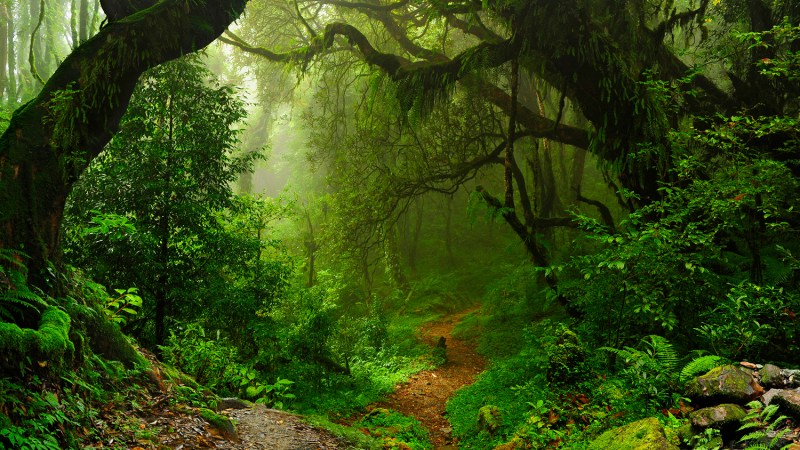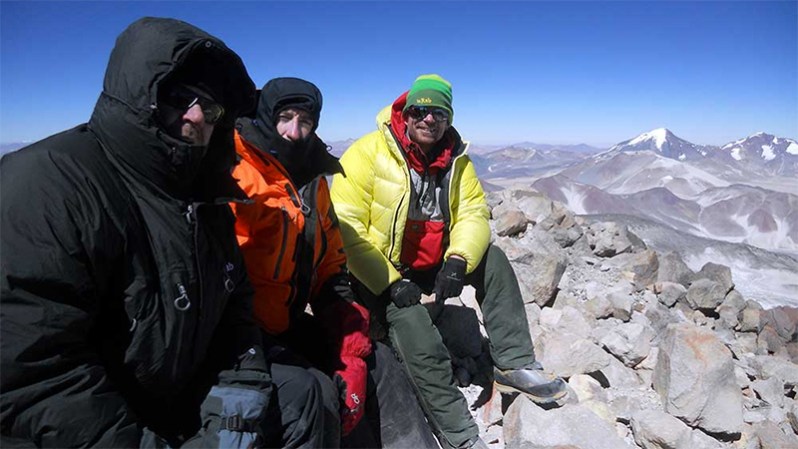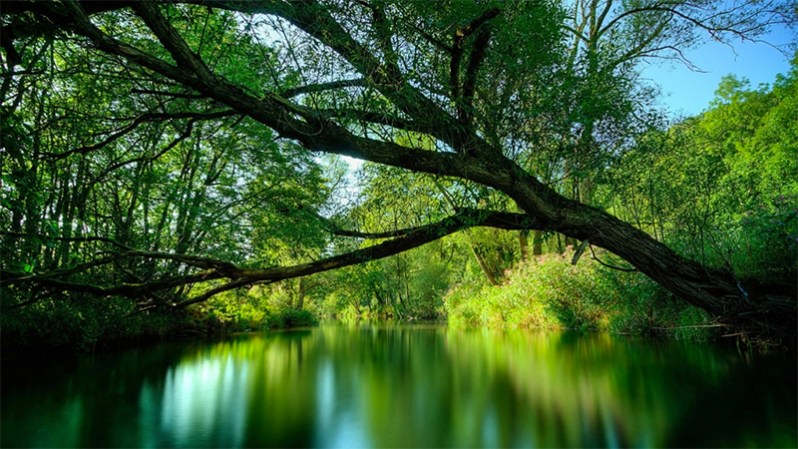
Biking the Death Road (Bolivia)
North Yungas Road carves a path down one side of Bolivia’s Cordillera Oriental Mountain Chain. The majority of it is unpaved and devoid of guardrails. To one side of the road, a sheer rock face; to the other, a 2,000-foot drop into a lush rainforest abyss. The warm, humid, Amazon climate guarantees fog and heavy rain most days of the year, making rockslides and mudslides a common occurrence. As many as 300 people are believed to die on the road every year, earning it the unenviable title of World’s Most Dangerous Road. To tourists and many locals, it’s known simply as “El Camino de la Muerte” or “Death Road.” Naturally, many local companies like Gravity Bolivia guide mountain biking tours down its harrowing 40-mile stretch.
Hiking the Darién Gap (Colombia/Panama)

The Pan-American Highway stretches nearly 20,000 miles from Prudhoe Bay, Alaska south to Ushuaia, Argentina, making it the world’s longest “motorable road.” However, this is misleading thanks to a gap in the road where Panama abuts Colombia. This is the Darién Gap: a dense, lawless, 100-mile stretch of jungle ruled by rebels, drug smugglers, and paramilitary groups. The Gap features virtually zero roads or obvious paths, and so the only way out is through. Hikers must typically bushwhack through the inhospitable wilderness full of poison frogs, jungle scorpions, and lots of spiny, deadly flora. To be very clear, hiking the Gap is dangerous, bordering on suicidal. Still, an unknown number of foolhardy travelers attempt it each year. In the words of one hiker who survived his trek there: “Even the most adventurous, or well-seasoned traveler should not give into their ego and think that they can go it alone. It’s way too easy to get lost in its vastness, or fall prey to those who hide in its uncontrolled boundlessness. I’ve been all over the world and hiked in untamed wilderness, but this is a world unto its own.”
Climbing Ojos del Salado (Argentina/Chile)

Straddling the border of Argentina and Chile, on the edge of the Atacama Desert, is Ojos del Salado (loosely translated from Spanish, “Eyes of the Salty One”). Set in the Andes Mountains, it’s the highest active volcano in the world, earning it a place on the elusive Seven Continental Volcanic Summits list. With an elevation of 22,615 feet — just 200 feet shorter than Aconcagua — the real danger here is altitude sickness and the perils that come with intense physical exertion at such high elevations. Plus, it’s still an active volcano. While it hasn’t erupted in more than 1,000 years, one millennium is the blink of an eye in geological terms. Anyone who’s reasonably fit can tackle the summit independently. But, given the elevation and inherent risks, it’s best to go with a group expedition like this one offered by Adventure Peaks. As a bonus, the permanent crater lake near 21,000 feet is believed to be the highest in the world.
Trekking the Amazon Rainforest

To be sure, hiking or paddling the Amazon rainforest is, like almost everything in life, as dangerous as you make it. Going with a guided expedition — someone who understands the dangers of the local flora and fauna — almost guarantees you’ll emerge from your journey unscathed. But many travelers (like the two woefully inexperienced Polish brothers who undertook a harrowing paddle-bike journey downriver) decide to go it alone. The litany of reasons why this is a terrible idea is a long one. To boil it down: Every last thing in the Amazon is designed to kill you. However, if it’s true adventure you’re after, you’ll find it here.


